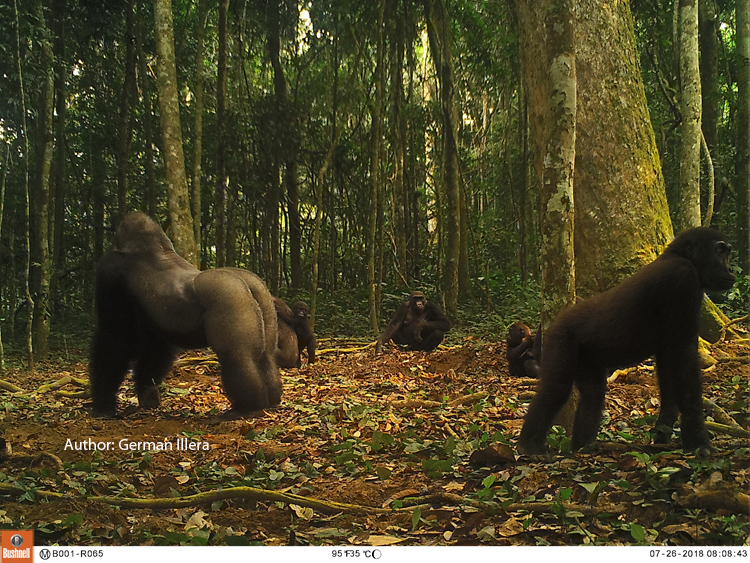Social networks are the result of interactions between individuals at different temporal scales. Thus, sporadic intergroup encounters and individual forays play a central role in defining the dynamics of populations in social species. The rate of intergroup encounters was assessed for three western lowland gorilla Gorilla gorilla gorilla groups with daily observations over 5 years, and non-invasively genotyped a larger population over four months. Both approaches revealed a social system much more dynamic than anticipated, with non-aggressive intergroup encounters that involved social play by immature individuals, exchanges of members between groups likely modulated by kinship, and absence of infanticide evidenced by infants not fathered by the silverback of the group where they were found. This resulted in a community composed of groups that interacted frequently and not-aggressively, contrasting with the more fragmented and aggressive mountain gorilla G. beringei beringei societies. Such extended sociality can promote the sharing of behavioural and cultural traits, but might also increase the susceptibility of western lowland gorillas to infectious diseases that have decimated their populations in recent times. informacion[at]ebd.csic.es: Forcina et al (2019) From groups to communities in western lowland gorillas. P Roy Soc B-Biol Sci https://doi.org/10.1098/rspb.2018.2019
https://royalsocietypublishing.org/doi/10.1098/rspb.2018.2019

 Las altas temperaturas están provocando que las lagunas y las marismas de Doñana pierdan agua rápidamente
Las altas temperaturas están provocando que las lagunas y las marismas de Doñana pierdan agua rápidamente




